Editor's note: Our testing of the new Mac Mini is ongoing and this review will be updated with additional test results and a final rating.
Now available in a new, more powerful version, the Mac Mini desktop is one of Apple's longest-standing product lines, dating back to 2005 (in a pre-Intel version), a year before the first MacBook. All these years later, it retains the same basic shape and appeals to much of the same audience. Unlike MacBook Pro and Air laptops, or the iMac desktop, the Mini is designed to work behind the scenes, fitting into small spaces and pairing with your choice of display and input devices.
Sometimes called the podcaster's favorite computer, that description still applies to this new iteration of the Mac Mini. And, with an optional M2 Pro processor from Apple's chip line, the new Mini can take on more complex multimedia assignments on par with the also-new M2 Pro MacBook Pro.
Read more: M2 Pro MacBook Pro 16 Review: Apple Peps Up Its Creative Workhorse
At $599 (£649, AU$999) to start, the Mini also remains the least expensive way to get a MacOS computer by a large margin. The relatively ancient M1 MacBook Air from 2020 is the closest competitor price-wise, at $999. The M2 Pro version of the Mac Mini starts at $1,299.
Like
- Lowstarting price
- Wide range of configuration options
- Adds Wi-Fi 6E
Don't Like
- Least expensive model has fewer ports, small storage
- RAM can only go up to 32GB
- Some component upgrades feel pricey
System configurations
|
|
Apple Mac Mini (M2, 2023) | Apple Mac Mini (M2 Pro, 2023) |
|---|---|---|
| Price as reviewed | $599 | $1,799 |
| CPU | Apple M2 (8-core CPU,10-core GPU) | Apple M2 Pro (12-core CPU,19-core GPU) |
| RAM | 8GB LPDDR5 | 16GB LPDDR5 |
| Storage | 256GB SSD | 1TB SSD |
| Networking | Wi-Fi 6E (802.11ax), Bluetooth 5.3 | Wi-Fi 6E (802.11ax), Bluetooth 5.3 |
| Operating system | MacOS Ventura 13.2 | MacOS Ventura 13.2 |
As a long-time Mac reviewer, the relative affordability of the Mini line is still one of its most important selling points. Especially if you have your own display and maybe your own keyboard/mouse setup, the Mac Mini gets you all the advantages of MacOS, and its speciality chops in design, audio production, and photo and video editing, for a lot less.
The last time I tested a new Mac Mini was the last time there was a new Mac Mini. That was in fall 2020, when the very first Apple Silicon products were released. They included the MacBook Air, the 13-inch MacBook Pro and the Mac Mini, each with the original M1 chip.
Since then, the Mac Studio from early 2022 offered a bigger, more powerful take on the small-form-factor Apple desktop, with M1 Max and M1 Ultra chips. And that system, even without an M2 update, is still more powerful in many cases than the new Mac Mini, which only goes up to an M2 Pro.
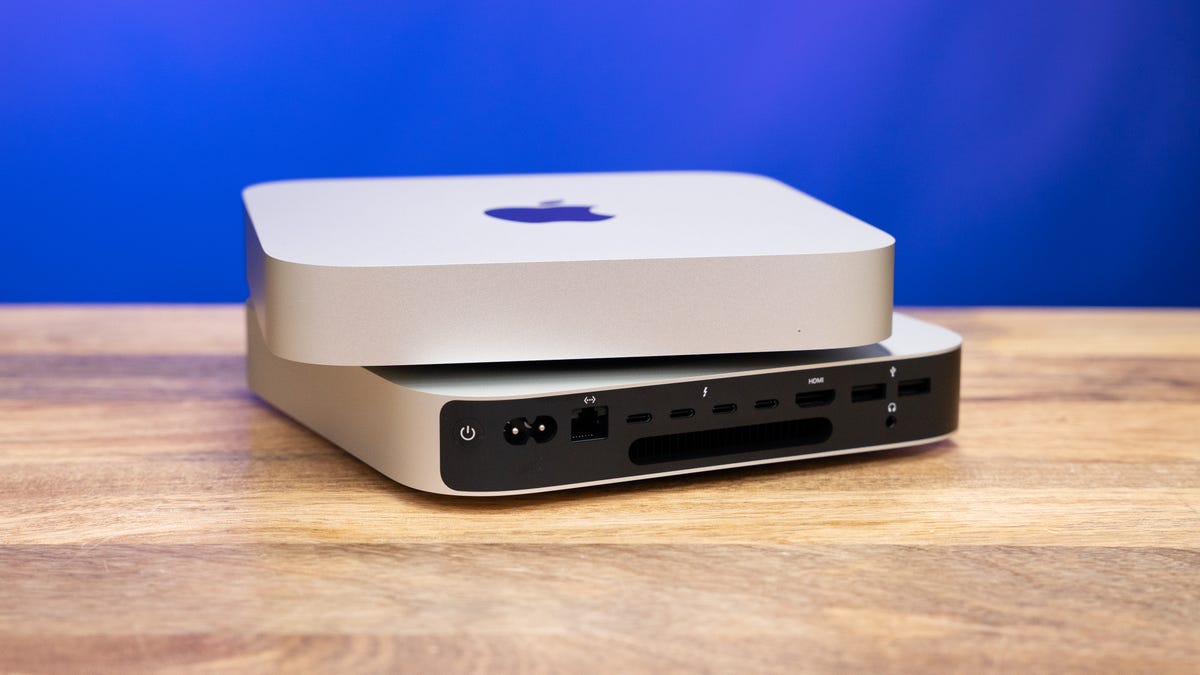
Apple's chip-naming system is clearer than some others but still confusing if you don't follow it closely. The M1 family has grown to include the M1, M1 Pro, M1 Max and M1 Ultra (basically a doubled-up M1 Max). The M2 family started with the stock M2 and has just added M2 Pro and M2 Max versions. It's the Pro/Max/Ultra suffix that really tells you which chip is more powerful. An M1 Pro is still more powerful than a base M2 and so on. But… the number of CPU and GPU cores available in some configurations can also juggle the rankings and relative performance.
That means the Apple desktop ecosystem is very thinly sliced indeed. Right now, the Mac Mini offers M2 and M2 Pro versions, the Mac Studio has M1 Max and M1 Ultra chips, so I wouldn't say there's direct overlap. The higher-end M2 Pro Mac Mini starts at $1,299, while the least expensive Mac Studio, with the M1 Max, starts at $1,999.
Video: Testing Apple's New M2 MacBook Pro and Mac Mini
A tale of two Minis
The two new Mac Mini versions differ in both the chip and some configuration options. The M2 model starts with 8GB of RAM, which can be upgraded to 16GB or 24GB. Storage starts at 256GB and can go up to 2TB. The M2 Pro version starts at 16GB of RAM and 512GB storage and is upgradable to 32GB and 8TB.
Another difference is that the M2 Pro model has four thunderbolt 4/USB-C ports on the back panel, while the M2 version has only two. And while the M2 Pro can support up to three displays, or one with 8K/60Hz resolution, the M2 model can support two displays and tops out at 6K/60Hz.
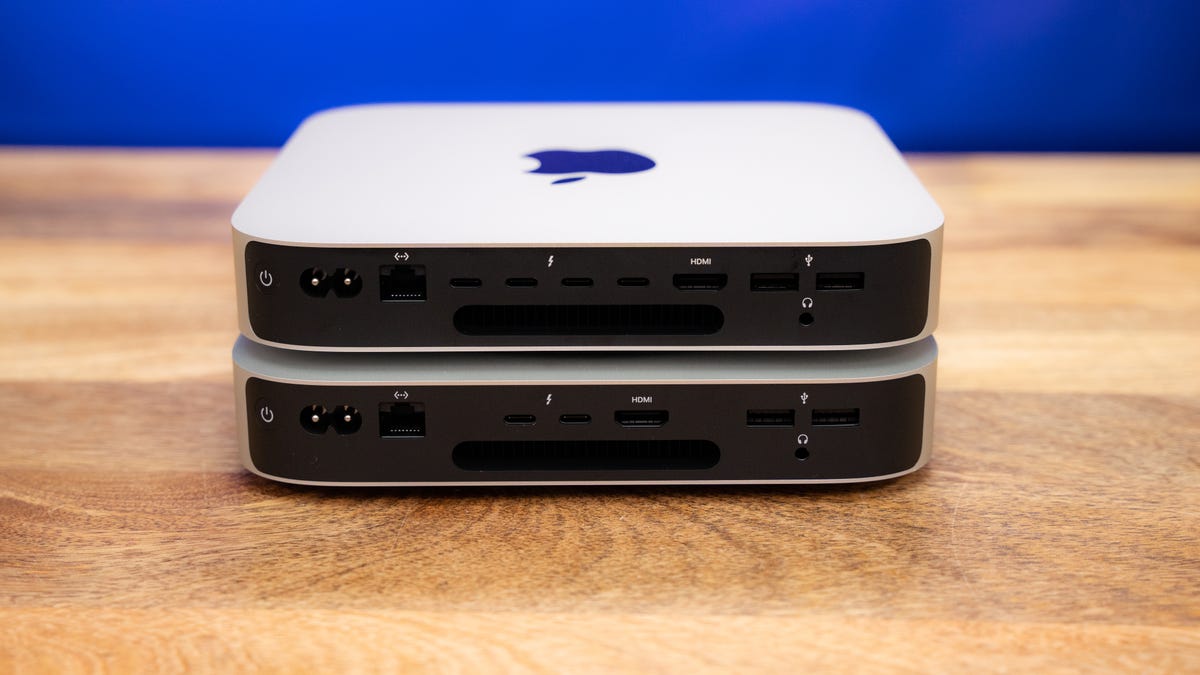
The M2 Pro version on top has four Thunderbolt 4 ports; the M2 version below it has only two.
The two models tested here are the base $599 Mac Mini with the 8-core CPU/10-core GPU M2 chip, 8GB of RAM and 256GB of storage; and an upgraded version with the 12-core CPU/19-core GPU M2 chip, 16GB of RAM and 1TB of storage, for a total of $1,799.
A podcaster's dream
Where other Apple products have had their moment in the sun and faded into extinction, like the 27-inch iMac or 12-inch MacBook, the Mac Mini has always floated just under the radar. It's not the first Mac you think of, but it's always there. I attribute that to its second life, perhaps originally unintended, as the perfect computer for small production studios.
That could mean a small to midsize recording studio for music and voice-overs, or a home office setup for audio or video podcasts. That's an area where dedicated computers are in danger of becoming obsolete, as popular new platforms like TikTok are built around shooting and editing directly from your phone.
But as an occasional social media poster, and podcast guest and host, over the years, there's still no comparison between even advanced phone-based editing and using something like Final Cut or Premiere Pro on a desktop or laptop to produce your creator content, even if it'll eventually end up as a small vertical social video.
And especially for audio, the Mac Mini still feels like an excellent all-around solution. I recorded some video voice-over on the Mac Mini for this review, using Audacity and an external mic. As expected, I had no problems, even running multiple sound-shaping plugins (although for a very basic task like this, a standard budget Windows machine could do the same).
I asked one of my team's video editors to throw a decently chunky Premiere Pro project on both the M2 and M2 Pro versions of the Mac Mini.
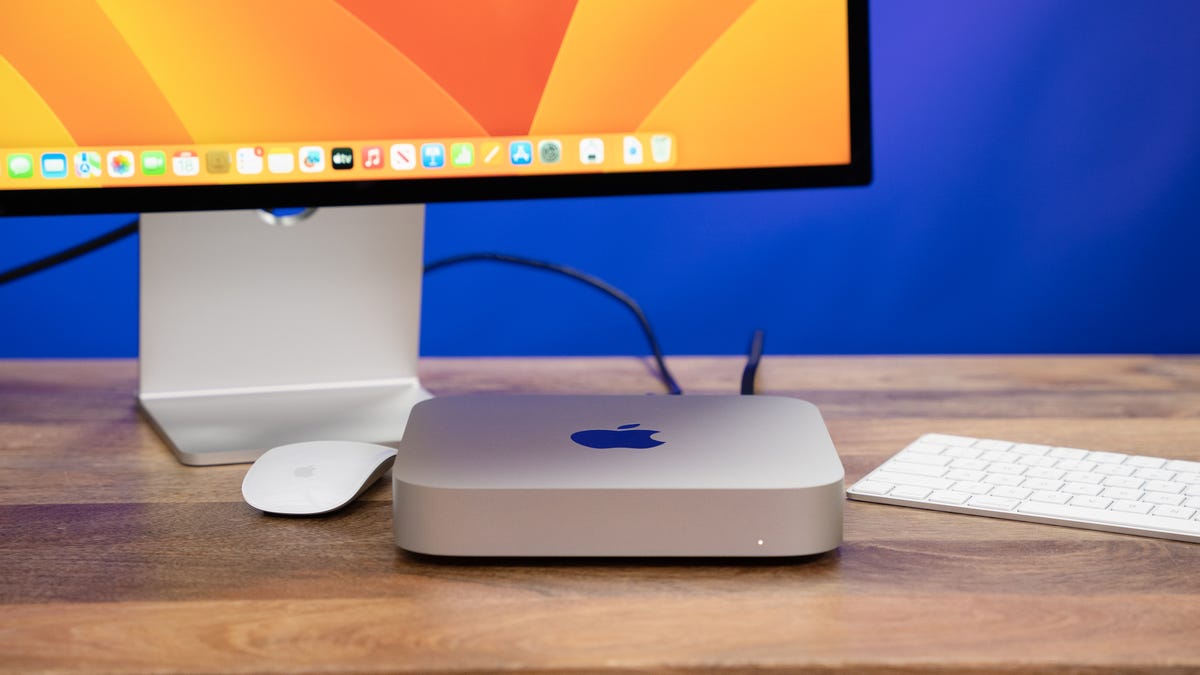
Video producer-editor Bobby Oliver loaded up a 4K/24 Premiere project with some graphics/titles and color correction. He said on the base $599 Mac Mini with the M2 chip, "It was doable, but while editing I had to play the video in the program window at the lowest quality setting to avoid stuttering, but even then I got some minor stuttering." He said the system would be fine for regular FHD video, but he thought the 8GB of RAM in the base model was a performance obstacle. The base-model Mac Mini with the 256GB SSD also has potentially slower read/write speeds than other configs, similar to the M2 MacBook Air, because of how the storage is either split into two NAND chips, or uses just one. We'll do more drive speed testing in the coming days.
Then he tried the same project on the M2 Pro version, which had 16GB of RAM. In that case, he said, "That one felt almost flawless. I could preview the video at full resolution and only had some minor stuttering when I hit the graphics. I could move easily around the timeline without any delay. Color correction didn't seem to be an issue. I would definitely use it as an editing machine."
In our benchmark tests, the different levels of M1 and M2 chip performance are also clear, in part because the CPU and GPU core counts and clock frequencies have risen generation-over-generation. Generally, the Mac Studio desktop with the M1 Max chip from 2022 is the overall most powerful Mac we've tested – in situations where it has the most cores. The Mini and Air with M2 chips outperformed their predecessors with M1 chips, and similarly, the M2 Pro systems beat the M1 Pro systems. Apple's well-marked strata of chip versions generally tells you what to expect once you figure out the language, but it can still be tricky.
Overall, I appreciate how you can get similar performance in either a desktop or laptop by choosing the same chip/RAM combo, making for easier comparison shopping; but note that the desktops and larger laptops have some inherent thermal advantage with better cooling that can add a small performance boost.
Is the Mac finally a gaming machine?
Well, no. Although in its promotional materials, Apple leans a little more heavily into promoting the gaming chops of the M2 chips. The company calls out performance for the upcoming Mac version of Resident Evil Village, saying the M2 Mac Mini has 35% faster performance in that game over the 2020 M1 version, and that the M2 Pro version is 2.8x faster.
But your game experience is going to be greatly impacted by many factors, including choice of display, either the Apple Studio display, Apple's favored LG displays or something else; and by the still-limited game selection on MacOS, largely constrained by the desktop-friendly games in Apple Arcade, games in the Mac App Store and the MacOS section in online game stores like Steam.
Right now, the top-selling MacOS games on Steam include Civilization VI (2016), Rust (2018), Project Zomboid (2013) and, of course, Baldur's Gate 3 (2020 in beta, but officially releasing summer 2023).
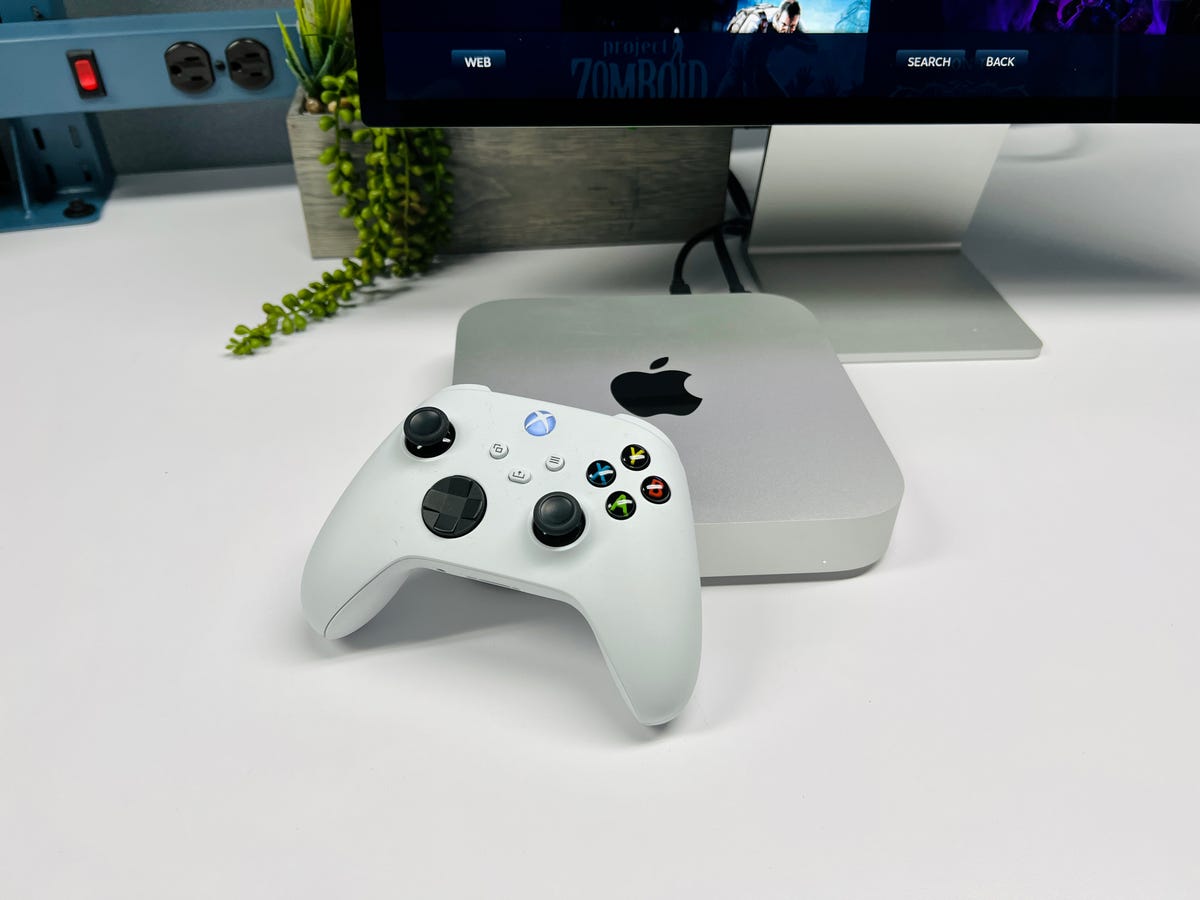
While there's nothing especially new on the gaming front for this hardware or the new M2 chips (besides faster performance), I decided to give it another shot as a game machine. Pre-Apple-Silicon, you could at least dual-boot into Windows to play PC games on Mac hardware. Now, you're mostly limited to native Mac games or cloud streaming – Nvidia Geforce Now is great paired with a big 24-inch iMac display, for example.
Connecting a standard Xbox controller via Bluetooth (a Sony DualSense controller will work, too), I spent some time with Baldur's Gate 3 and Hades. The high screen resolution of the Mac Studio Display I used added some extra challenge, and I turned up the in-game graphic settings as high as possible. Mac versions of games often have fewer graphics options than the Windows versions.
On the M2 Mac Mini, Baldur's Gate 3 needed to get its resolution pulled down to 2,560x1,440 pixels and graphics settings set to medium to feel playable. On the M2 Pro version, I used the same resolution but could play at Ultra settings. Hades ran great on even the base Mac Mini. In both the GPU-intensive 3D Mark and the GeekBench Metal test, we can see some additional daylight between the M2 and M2 Pro, as indicated in the charts below.
Who should buy this?
A MacBook Air is easy to visualize in action – stick it in your backpack or shoulder bag and hit the coffee shop or airport. An iMac is a great centralized family room computer or a home office command center, especially if you spend a lot of time in Zoom or other video meetings. The Mac Mini is more specialized in some ways, but also has potentially broader appeal because of its low starting price.
The base M2 version of the Mac Mini, starting at $599, feels like it's for entry-level buyers who want a MacOS system at the lowest possible price; audio and video producers who are already committed to a collection of external displays, input devices and storage drives; or anyone who needs a portable mini desktop that can be thrown in a bag and hooked up at an office or recording studio. Also worth noting, the Mac Mini has an Ethernet port, HDMI output and USB-A ports, which are great for expansion and hard to find in some other Macs, even very expensive ones.
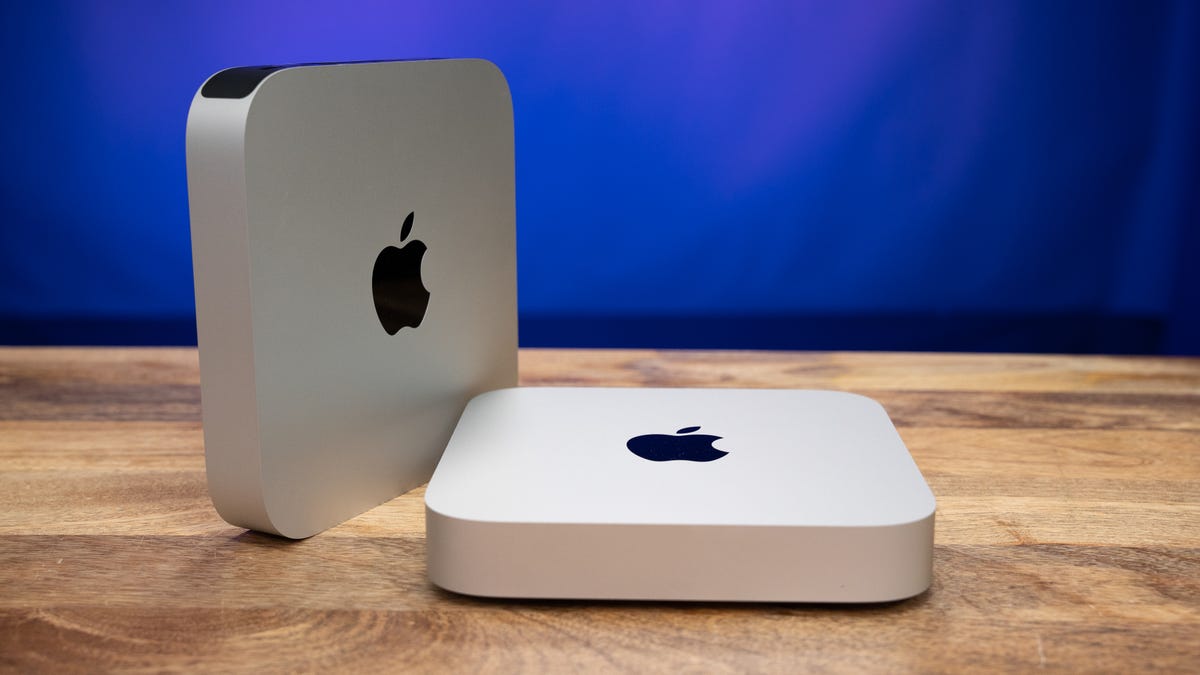
The main downside to that base model is the relative skimpy RAM and storage. Unlike a Windows machine, MacOS can actually get along fine in most mainstream cases with 8GB of RAM, but the included 256GB of storage feels like it'll get filled quickly. Jumping up to 512GB adds an extra $200, which is a big premium for a budget computer (but also offers potentially faster read/write speeds).
The M2 Pro version offers a sizable raw performance jump, plus better RAM and internal storage options, but if you're considering that, then the MacBook Pro and even the Mac Studio should also be part of your comparison shopping.
I think the base M2 Mac Mini is going to be a smart, clear choice for a lot of people. The more powerful, more expensive M2 Pro version isn't as clear cut, but I appreciate the flexibility having both the M2 and M2 Pro versions adds, allowing you to spend anywhere from $599 to $4,499 on a new Mac Mini that meets your specific needs, whether that's creating pro-level YouTube videos or recording and producing the next great true crime podcast.
Geekbench 5 (multicore)
Apple Mac Mini (M2 Pro, 2023)
15,013
Apple MacBook Pro (16-inch, 2023)
15,009
Apple Mac Studio (M1 Max, 2022)
12,871
Apple MacBook Pro (16-inch, 2021)
12,627
Apple MacBook Pro (14-inch, 2021)
12,259
Apple Mac Mini (M2, 2023)
9,003
Apple MacBook Air (13-inch, 2022)
8,592
Apple Mac Mini (M1, 2020)
7,758
Note:
Longer bars indicate better performanceGeekbench 5 Metal
Apple Mac Studio (M1 Max, 2022)
68,638
Apple MacBook Pro (16-inch, 2023)
53,338
Apple Mac Mini (M2 Pro, 2023)
52,792
Apple MacBook Pro (14-inch, 2021)
40,631
Apple Mac Mini (M2, 2023)
30,573
Apple MacBook Air (13-inch, 2022)
29,998
Apple Mac Mini (M1, 2020)
21,997
Note:
Longer bars indicate better performanceCinebench R23 (multicore)
Apple Mac Mini (M2 Pro, 2023)
14,814
Apple MacBook Pro (16-inch, 2023)
14,803
Apple Mac Studio (M1 Max, 2022)
12,389
Apple MacBook Pro (16-inch, 2021)
12,365
Apple MacBook Pro (14-inch, 2021)
12,302
Apple Mac Mini (M2, 2023)
8,730
Apple Mac Mini (M1, 2020)
7,818
Apple MacBook Air (13-inch, 2022)
6,796
Note:
Longer bars indicate better performance3DMark Wild Life Extreme Unlimited
Apple Mac Studio (M1 Max, 2022)
20,297
Apple MacBook Pro (16-inch, 2021)
17,640
Apple Mac Mini (M2 Pro, 2023)
13,048
Apple MacBook Pro (16-inch, 2023)
12,989
Apple MacBook Pro (14-inch, 2021)
10,264
Apple Mac Mini (M2, 2023)
6,925
Apple MacBook Air (13-inch, 2022)
6,803
Apple Mac Mini (M1, 2020)
5,060
Note:
Longer bars indicate better performanceSystem configurations
| Apple Mac Mini (M1, 2020) | MacOS Monterey 12.5.1; Apple M1 (8 CPU cores, 16 GPU Cores); 8GB PDDR4X RAM; 256GB SSD |
|---|---|
| Apple Mac Mini (M2, 2023) | MacOS Ventura 13.2; Apple M2 (8 CPU cores, 10 GPU cores); 8GB LPDDR5 RAM; 256GB SSD |
| Apple Mac Mini (M2 Pro, 2023) | MacOS Ventura 13.2; Apple M2 Pro (12-core CPU,19-core GPU); 16GB LPDDR5 RAM; 1TB SSD |
| Apple Mac Studio (M1 Max, 2022) | MacOS Monterey 12.3; Apple M1 Max (10 CPU ores, 32 GPU cores); 64GB RAM; 2TB SSD |
| Apple MacBook Air (13-inch, M1, 2022) | MacOS Monterey 12.4; Apple M2 (8 CPU cores, 10 cores GPU); 8GB LPDDR5 RAM; 256GB SSD |
| Apple MacBook Pro (14-inch, M1 Pro, 2021) | MacOS Monterey 12.4; Apple M1 Pro (10 CPU cores, 16 GPU cores); 32GB LPDDR5 RAM; 1TB SSD |
| Apple MacBook Pro (16-inch, M1 Max 2021) | MacOS Monterey 12.4; Apple M1 Max (12 CPU cores, 32 GPU cores); 32GB RAM; 512GB SSD |
| Apple MacBook Pro (16-inch, M2 Pro 2023) | MacOS Ventura 13.2; Apple M2 Pro (12 CPU cores, 19 GPU cores); 32GB LPDDR5 RAM; 1TB SSD |
No comments:
Post a Comment